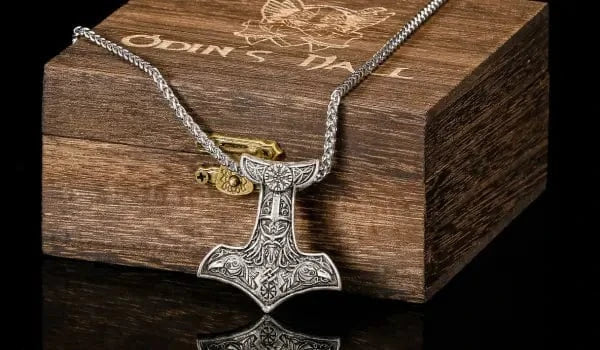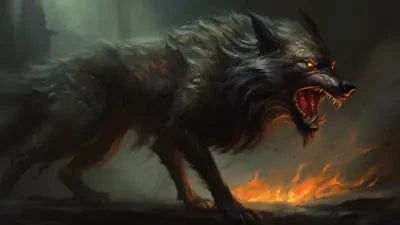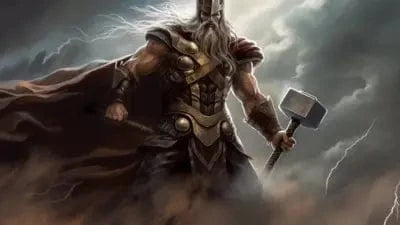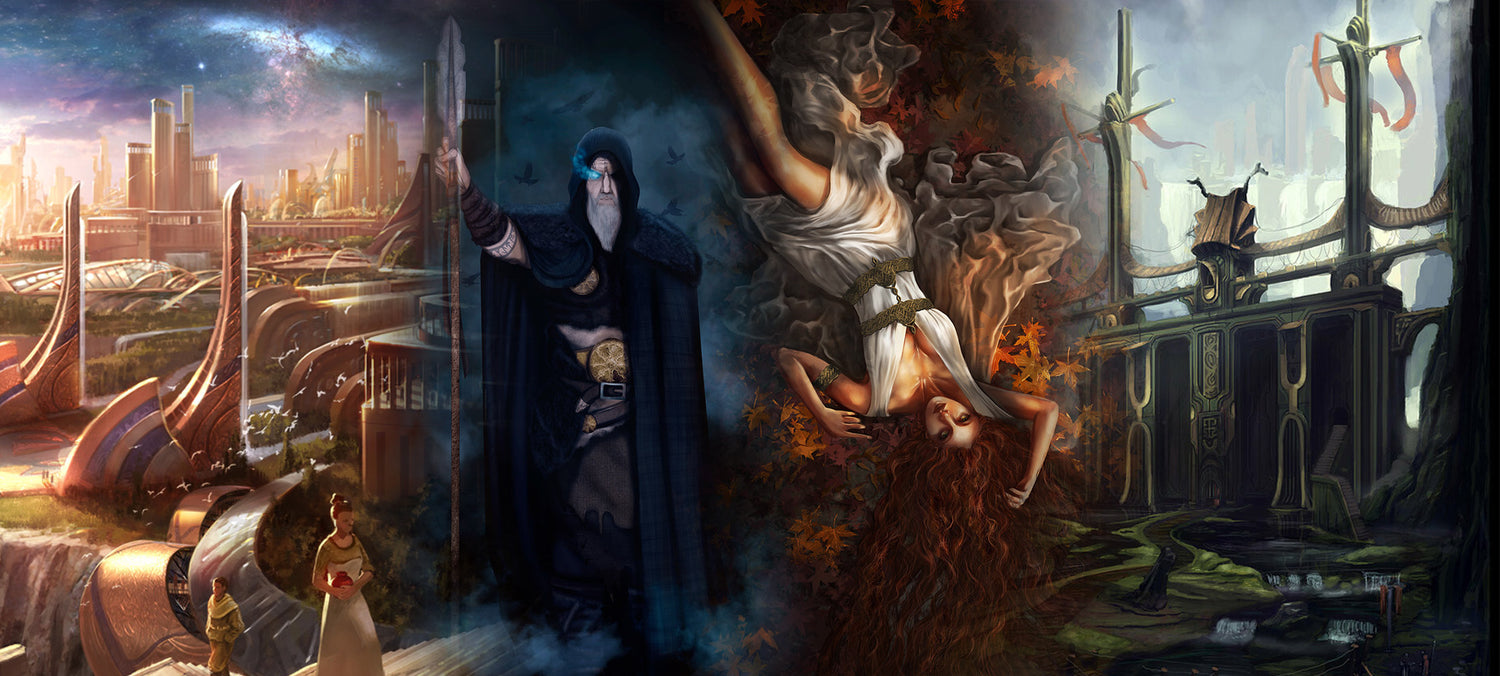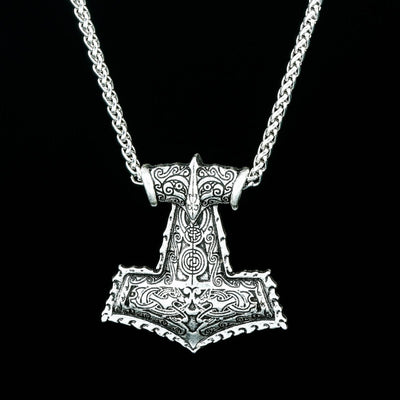The Nordic Pantheon represents the set of Nordic Gods. Two families of gods can be distinguished the Ases, coming from Asgard and the Vanes, coming from Vanaheim.

Odin
ASES AGAINST VANES
Although the two sides have come to form a single family today, this was not always the case. Indeed, a war that lasted several centuries pitted the Aesir against the Vanes. Their ideals were so different that it created chaos. The Aesir, symbol of aristocracy, were totally opposed to the values fertile fecund of their elders, the Vanes (if only they were mortal like everyone else, we could have avoided a war). This discord is in fact often compared to a debate we still see today, the Aesir, symbol of the city versus the Vanes, symbol of the countryside.

Sleipnir, the cheva of Odin

A Viking warrior
The ASES
It is Odin who has the heavy task of leading the Aesir. He seems like the perfect person when you see that he and his brothers created the Earth (no less) from the corpse of the giant Ymir. At the end of the war, it was in Asgard, city of the Aesir, that the Vanes came to settle. The mixing of their saliva (an original way to celebrate the end of a war) created the giant Kvasir. According to the myths, the blood of this giant, mixed with honey created the Hydromel, alcohol of the gods.
NORDIAN GODS OF THE ASES FAMILY
-
Odin
-
Thor
-
Baldur
-
Týr
-
Bragi
-
Heimdall
-
Höd
-
Vidar
-
Vali
-
Ull
-
Foresti
-
Loki
ODIN
He is the best-known Norse god, among other things, because he is the head of the largest god family, and because he created the Earth. A representative of the dead, of victory and of knowledge, he is depicted as an elderly man, with a long beard and one blind eye. He lives in Valaskjálf, in Asgard and always rides on his eight-legged horse and spear named Gungnir.
THOR
Thor is regarded in Norse mythology as the god of thunder. He is one of the best known, especially thanks to the many film adaptations in which he is depicted. According to Scandinavian texts, he is considered to be the most powerful god, particularly thanks to his famous hammer, Mjöllnir, with which he summons lightning. Representing strength, agility, valor and victory, he also fights with a chariot, pulled by two goats that allow him to cross the different worlds.
BALDR
More commonly known as Baldur or Balder is the Nordic god of light, youth, beauty and love. Son of Odin and Frigg (one of his wives), he was and is one of the most loved Norse gods, and for good reason, even today, his name has been given as a nickname to the matricarias (an Icelandic flower).
TYR
This is the judge of the Nordic pantheon. Indeed, he is basically the sky god of war and justice, but also god of oaths, procedures and law. The information about him being very vague, it is still unknown today whether he is the son of Odin or of the giant Hymir. He gained his heroic worth by putting his hand into the fenrir's mouth (a wolf) so that he could defeat him. He lost his hand and is now known as the one-armed god.
BRAGI
In Norse mythology, Bragi is considered the god of poetry, indeed he is said to have invented it. In the pantheon, his reputation was made due to his eloquence. His name has even been used to define poetry, indeed, in Old Norse, poetry is translated " bragr ".
HEIMDALL
A renowned god, again thanks to film adaptations. Even though he is not the character he is often seen appearing, especially in the Marvel Thor films. God of light and moon, it is to him that falls the heavy task of guarding the Bifröst (the magical bridge that allows one to go to and from Asgard).
HÖD
Son of Odin, Höd was known as the blind Norse god. This handicap actually caused him to kill Baldr. Indeed, Loki is said to have made a sneaky move to Höd, forcing him to shoot Baldr after being bewitched. This is one of the most controversial scenes in Norse mythology, indeed, no one agrees on why or how the assassination took place. This version is therefore the most common version, but depending on the myth, it may vary.
VIDAR
Vidar is the god of vengeance and silence. This Norse god, although he appears very little in the myths, is considered one of the strongest (after Thor of course). His most famous myth takes place during the Ragnarök (the equivalent of the end of the world in Norse mythology). Indeed, it is he who avenges the death of the famous Odin, by piercing Fenrir's heart and ripping out his brains with his magical shoe (our team still hasn't figured out how it was possible).
VALI
Son of Odin and Rind (yet another wife), Vali is known for the vengeance he may have exacted on Höd, for the murder of Baldr. It is said in the texts that he did not wash or comb his hair until this revenge had been carried out (one hardly dared imagine the smell in Asgard). In the texts, he only appears during this myth, so information about him is very vague.
ULL
Ull, considered the god of hunting and winter in Norse mythology is the adopted son of Thor. It was his shield that made him a unique being. Indeed, it allowed everyone to protect themselves and it also allows to go on water (reminds another Marvel hero). He married Skadi, goddess of the cold and the mountains.
FORESTI
He is the son of Baldr and Nanna. Despite his capital importance (god of justice and reconciliation all the same), he plays a much less indispensable role in the Nordic mythology, indeed he appears only very little in the best-known myths.
LOKI
Loki is one of the best known Norse gods, unfortunately for all the wrong reasons. He is the god of discord, of malice and of delusions (this is already off to a bad start). He is the father of various ravaging monsters and the mother of Odin's horse (yes yes, he is both the father and the mother). His talents of metamorphosis and illusions often caused problems, but it was also thanks to these talents that he solved them. His betrayal of Baldr led to his almost eternal imprisonment, until the Ragnarök. In revenge for this imprisonment, which he deemed unjustified, he freed and led the giants in war against the Aesir gods. It was Heimdall who put an end to this disaster by killing him.
The Vanes
Their story begins with a family of three gods (Njord, his son Freyr and his daughter Freyja). It was through the marriage between Njord and Skadi, goddess of the Aesir, that the war between the two families ended.
NORDIAN GODS OF THE VANISH FAMILY
-
Njord
-
Freyr
-
Freyja
NJÖRD
He is the god of the seas and winds. In the Nordic mythology, he was often associated with fortunes found at sea and good fishing. He was married to Skadi, an Ase giantess, but it was with her sister, Nerthus, that he had his children (a practice that was apparently more common then than now).
FREYR
Considered the god of prosperity in Norse mythology, he is also said to control the rain and the sunshine (in case of bad weather, you know who to complain to). His most famous story is his meeting with his wife: Gerd. While sitting on Odin's throne, which, it should be remembered, allows one to observe the nine worlds, he saw the giantess and immediately fell in love. It was by sending his squire to the world of the giants that he managed to convince her to marry him.
FREYJA
Freyja is the daughter of Njörd, considered in Norse mythology to be the goddess of fishing and fish. With her twin, Freyr, they share the attributes of fertility (indeed, the latter is responsible for agriculture). Its most famous attribute is its necklace preventing anyone from resisting its charm, the Brisingar necklace. Beware though, according to myths, this necklace could also belong to Frigg.
CONCLUSION
Nordic mythology is full of fascinating myths, to be taken with hindsight, indeed, the little information we have about some legends, can make this information right or wrong depending on the experts.
Each god having its particularity, we invite you to consult the articles of each god to learn more.
Thanks for reading, it's a pleasure to write for Odin's Hall, the leading brand in accessories from Norse mythology.
Get into your drakkar and browse our site:
